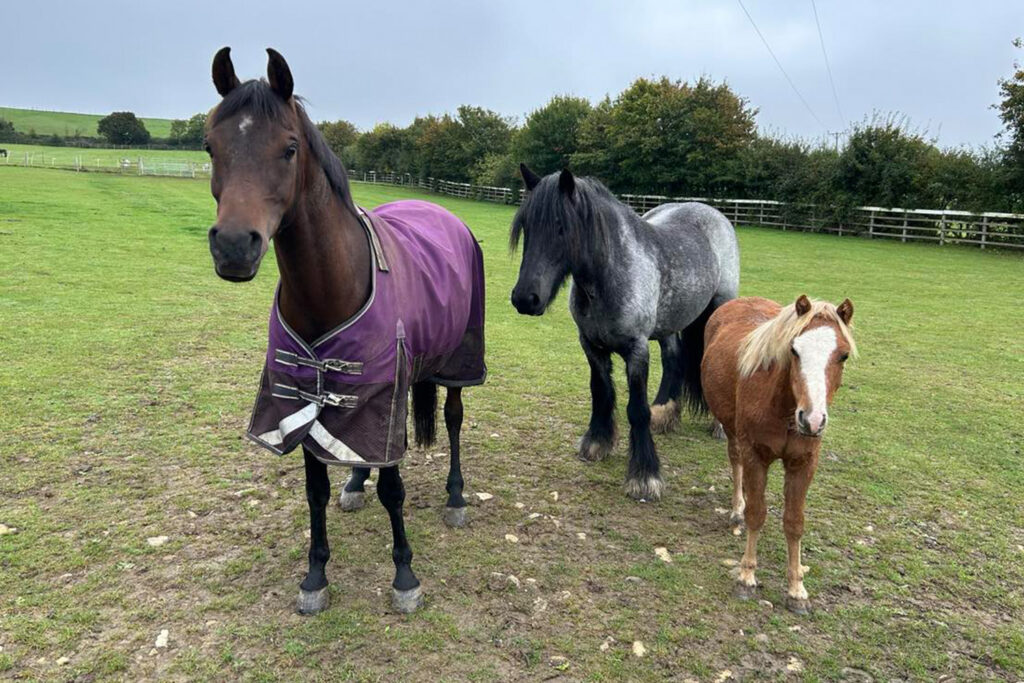It is common to see horses in different types of rugs all year round, but how do you know when your horse needs a rug, and what type of rug they need?
The following guidance should help you consider the factors that go into deciding whether your horse needs a rug or not, and the type of rug that may suit their needs. It is important to always consider your horse’s individual needs and not be influenced by others.
Horses can usually regulate their body temperature well when the environmental temperature is between 5-25°C. Above or below this range, then we need to change our management or make sure our management includes choice of shelter to avoid cold and inclement weather, as well as provision of shade on hot days. Anecdotally, many horse owners report horses choosing to stay out in heavy rain but seeking shade and shelter from flies on hotter days. It is important that horses can freely choose which environment they would like to be in. For more information, please see our guidance on the 5 Domains for Animal Welfare.
When considering rugging, it may be useful to work through the following factors:
- Your horse’s fat score and weight management needs
- The weather forecast and temperature (including the ‘feels like’ temperature which is now displayed on many weather forecasts)
- The availability of forage (grass, hay or haylage)
- The availability of shelter (natural, such as hedges/trees, and/or manmade field shelters)
- Your horse’s ability to move freely, for example, whether they stabled or turned out (remember, movement creates heat)
- Your horse’s health and whether they have any medical conditions, e.g., poor dentition or a condition which requires management that could inhibit forage intake, such as laminitis.
- Your horse’s natural coat type e.g. if they are a native breed or cob, do they grow a thick coat, mane and tail?
- Whether your horse is clipped or unclipped. If they are clipped, how much hair is clipped and what was the reason for the clip e.g. to be comfortable during exercise or for weight loss?
- Whether your horse has been rugged before. When introducing rugging to a horse which has not previously been rugged, build positive associations with a rug and take your time, so that having a rug on becomes a positive experience for the horse.

If you decide that your horse does need to be rugged, it is important to pick a rug of an appropriate size, fit and weight to meet their needs. There are many different types of rugs available including stable, turn out and fly.
When deciding which rug to use, you should avoid over-rugging which can be detrimental your horses’ health and welfare. For example, a native horse with a long, thick mane might not need a rug with a neck cover – their mane already provides protection and insulation. If they were to wear a rug with a neck it could lead to discomfort due to rubbing or pulling their mane, or they could become too warm. Another example of over-rugging would be an unclipped, stabled horse with access to forage all night in a heavyweight rug, with a neck, in mild weather conditions. This horse could easily become too hot and start sweating. It is important to remember that just because we may be cold, our horses don’t feel the cold in the same way.
Popular advice in Environment

Pasture management for horse paddocks
Find out how to manage your paddock for the health of your horse, pasture and soil.

Winter horse care tips
Read our advice on how to care for your horse during winter, including our top ten tips on winter horse care.
Other advice categories
All webinar categories:
Call our Advice Line
+44 (0)1953 497 238Not found the advice or answer you were looking for here? Then our Advice Line is available during office hours, or you can email us on education@worldhorsewelfare.org to let us know what topics you were looking for.


